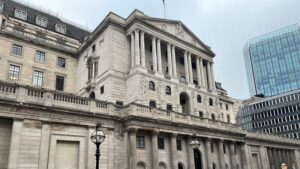Upgrading worn-out hospitals, schools roads, airports and any number of other public structures is phenomenally expensive and ridiculously necessary.
Public/private mix
Earlier this month, the UK government announced plans to underwrite £40bn of infrastructure investment to release private-sector funds to kick-start schemes that the public sector cannot afford to complete.
Given the state of the world’s finances right now public purses cannot foot the bill so across the globe private investment is being encouraged. For instance, Industry Funds Management is a company with offices in Melbourne, Sydney, and New York with, most recently, a 16-person infrastructure debt team in London. Globally it has more than $37bn in assets under management.
Robin Miller, head of this London team, says: “We think there will be more opportunities to invest in both infrastructure debt and equity assets in the UK and Europe because of the pressure that both governments and the banking system are under,” Miller said. “We expect to hire some people out of the banking industry.”
Earlier today, Vietnam’s minister of planning and investment nominated, perhaps unsurprisingly, Ho Chi Minh City as the location for the country’s first public-private partnership model to promote infrastructure development.
India’s is perhaps a contrarian in that its infrastructure spend will include $35bn of government money.
There are already open- and closed-ended funds taking advantage of this multi-billion dollar spend but how well are they taking advantage of it?
At the moment I would suggest the answer is “Not very…”.
Looking at the performance of open-ended funds, the range of returns from specialist funds over the past 12 months is a sterling loss of anywhere between 0.26% (Peter Meany’s First State Global Listed Infrastructure Fund) and 33.87% (Amundi Funds Equity India Infrastructure Fund run by Sidharth Mahapatra).
There are currency considerations to bear in mind, as well as the specialist nature of Mahapatra’s India-only proposition, but even then the average return of these specialist open-ended funds is still -10.58% over the past year.
Look forwards not backwards
The longer-term view is more rosy, especially if you take out single country funds, with the spread of returns over three years then being between 6.47% (Invesco Asia Infrastructure) and 14.42% (Russell OpenWorld Global Listed Infrastructure).
There may be an argument for infrastructure investors today looking more closely at closed-ended vehicles. Although the choice is more limited, the fund managers are equally heavyweight and the return profile is more positive.
The top-performing investment trust over the past three years is 3i Infrastructure, favoured by Edward Bland, head of research at Duncan Lawrie Private Bank, with returns of 15.33% (it has also returned 5.42% over one year and 3.67% over the past six months).
Even Infrastructure India has made positive returns, a single country trust returning 11.44% over three years. Unfortunately its shorter-term track record again points away a reliance on a single country as it has lost investors 38.75% in the past 12 months and 24.9% in the past six months.
The moral of this story?
“We,” says Bland, “have found a good cache of collectives going under the label of infrastructure funds and they provide index-linked income returns. They are also secure as the income is asset-backed by government-owned assets so it is…aherm…safe as houses.”
Looking ahead, for income investors infrastructure is well worth looking at. Infrastructure is without doubt a great investment theme, but it is a great long-term theme. A global approach is, for new money today, possibly the best approach.
Looking backwards, investment trusts have provided the best returns and this can probably be extrapolated for the short-term future, particularly for short-term investors.







